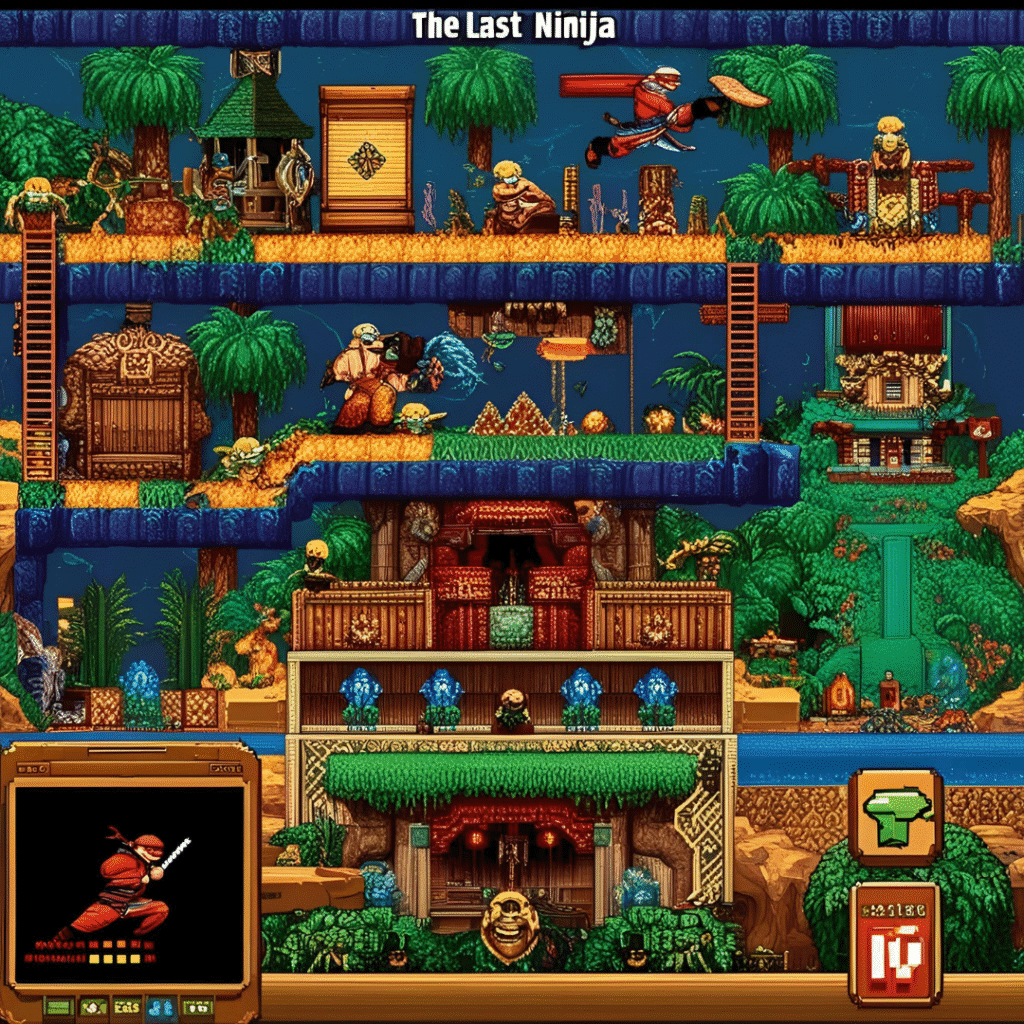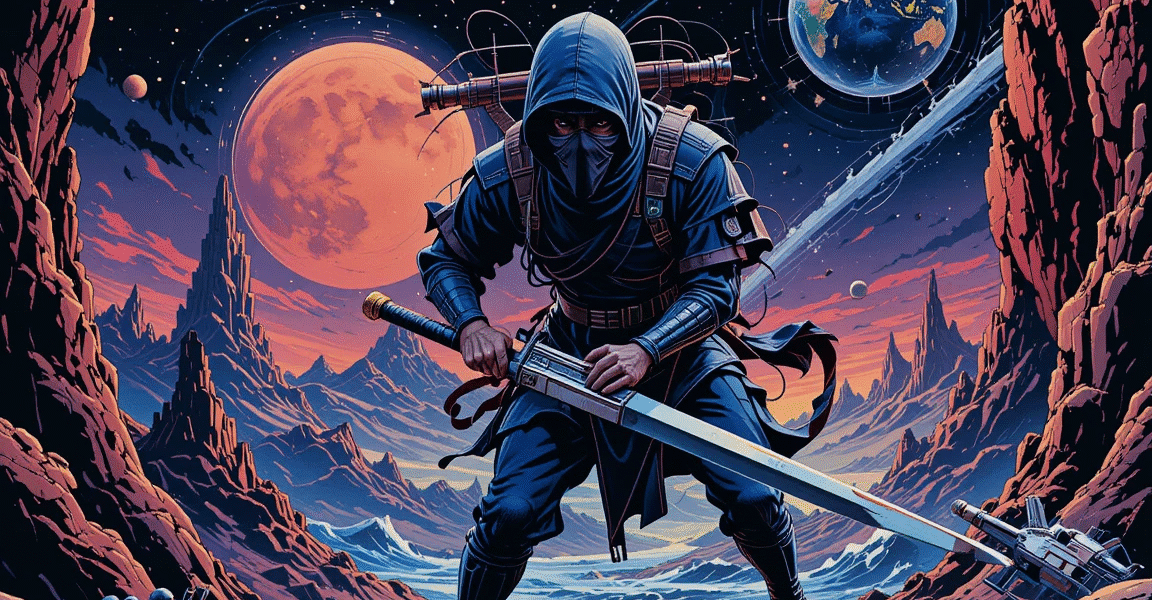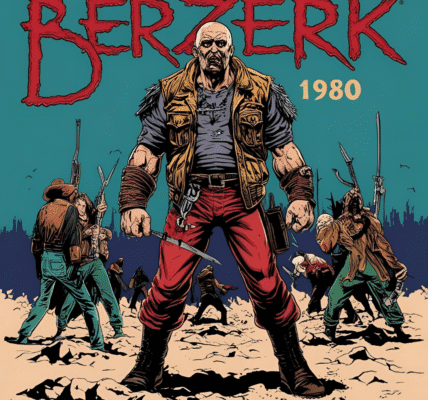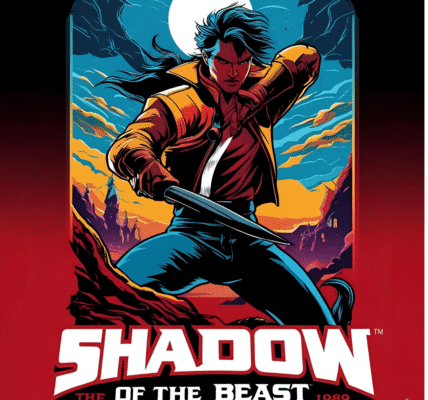The Last Ninja (1987) – A Masterpiece on the Commodore 64

Back in the mid-80s, video games were taking baby steps toward the rich experiences we know today. Amid the flood of arcade-style shooters and simple platformers, The Last Ninja, released in 1987 for the Commodore 64, was a breath of fresh air—and a sharp kick to the genre’s face. It didn’t just play differently; it felt different. From the moment you loaded it up, it was clear this wasn’t just another game—it was a full-blown ninja adventure.
A Game Ahead of Its Time
Developed by System 3, The Last Ninja stood out immediately thanks to its unique combination of action, exploration, puzzle-solving, and martial arts combat, all wrapped in a stunning isometric perspective. For 1987, that was groundbreaking. Most games were still working with side-scrolling or top-down views, but The Last Ninja had this pseudo-3D look that gave it a cinematic feel.
The mastermind behind the game was Mark Cale, the founder of System 3. He wanted to create something that felt truly immersive, not just a game where you run left to right jumping over stuff. And he nailed it. The Last Ninja offered a story, atmosphere, and challenge that felt miles ahead of many of its contemporaries.
The Story: Revenge, Honor, and Shadows
The game places you in the tabi boots of Armakuni, the last surviving member of a noble ninja clan. The evil shogun Kunitoki has wiped out your brothers, and now it’s up to you to travel to his fortress on the island of Lin Fen and serve justice—ninja style.
It’s a tale of revenge and honor, simple on the surface, but told through atmospheric clues, environments, and a sense of progression. This wasn’t common in games back then. You didn’t need walls of text—each screen, each enemy, each trap told you something about the world you were in.
Gameplay That Blended Genres
The Last Ninja was known for its blend of genres. It wasn’t just an action game or just a puzzler—it was both. As Armakuni, you explored each level in a semi-open way. You had to fight off enemies using a mix of martial arts and weapons—like nunchaku, swords, and shurikens—but also solve environmental puzzles to progress. That meant you weren’t just mashing buttons; you were thinking, exploring, and reacting.
And let’s talk about controls—they were a bit tricky. Movement was diagonal because of the isometric view, and it took time to master. You had to time your jumps, find hidden objects, and figure out when to fight and when to run. While some players found it frustrating, others loved the challenge. It felt like the game respected your intelligence and expected you to pay attention.
Graphics That Blew Minds
For a Commodore 64 game, the visuals were jaw-dropping. The isometric environments were colorful and detailed, especially considering the system’s limitations. Each area—from gardens and palaces to dungeons and bridges—had its own unique look and vibe.
There was also a clever use of shadows, reflections, and environmental cues that made the world feel alive. Characters and enemies were well-animated, and the game had a visual flair that stood out from everything else on the market.
The Music: Pure Gold on a Floppy Disk
You can’t talk about The Last Ninja without mentioning the legendary soundtrack. Composers like Ben Daglish and Anthony Lees delivered one of the most iconic soundtracks ever created for the Commodore 64. Each level had its own theme, and these weren’t just beeps and boops—they were actual compositions, with rhythm, melody, and mood.
Even today, retro game fans rank The Last Ninja’s music as some of the best ever made. It added so much atmosphere to the experience that it elevated the whole game. If you played this with the sound off, you were missing half the magic.
Critical and Commercial Success
The Last Ninja wasn’t just beloved by fans—it was a commercial success. It sold hundreds of thousands of copies worldwide, making it one of the best-selling Commodore 64 games of all time. It received praise from critics for its visuals, music, and innovation, although some did critique the control scheme.
Despite the quirks, the overall experience was unforgettable. It won several awards and cemented System 3’s place as one of the top European game developers of the 80s.
Legacy and Influence
Following its success, The Last Ninja spawned two sequels:
- The Last Ninja 2 (1988)
- Last Ninja 3 (1991)
The sequels continued Armakuni’s story, bringing him into different environments (like modern-day New York in part 2) while refining gameplay and visuals. But for many fans, the original still holds a special place in their hearts because it was the first to open their eyes to what a video game could really be.
The Last Ninja also influenced a generation of game developers. The way it combined visuals, sound, story, and gameplay into a cohesive whole was inspirational. You can draw a line from it to modern action-adventure games that mix exploration and combat.
The Community Still Remembers
To this day, The Last Ninja has a cult following. Fans create remixes of the music, write fan-fiction, and even develop tribute games. Emulators and online archives have kept the game alive for newer generations who want to experience one of gaming’s foundational classics.
Some fans have even tried to remake or modernize the original game, though System 3 has held onto the rights tightly. Rumors of a remake or reboot have surfaced several times over the years, but nothing official has materialized—yet.
Final Thoughts
The Last Ninja wasn’t just a game; it was a full experience. It challenged you, immersed you, and made you feel like you were part of something bigger. It asked more of its players—and gave more in return. It was bold, ambitious, and unforgettable.
For anyone who owned a Commodore 64, this game wasn’t just another cartridge on the shelf. It was a journey. A quest. A test of both your reflexes and your mind.
And even decades later, that legacy still stands strong—silent as a shadow, sharp as a blade, and lasting like the legend of a true ninja.




